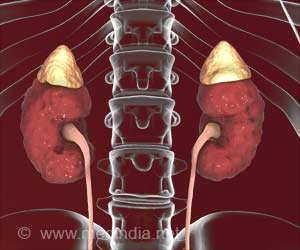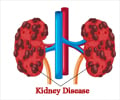Impaired kidney function - Chronic Kidney Disease (CKD) - has become a public health problem in India, as it affects 4.9 percent of Indian children and adolescents.

What is Impaired kidney function?
Impaired kidney function causes kidney damage to worsen over several months or years -- chronic kidney disease (CKD) (1✔ ✔Trusted SourceImpaired Kidney Function
Go to source).
‘First nationwide survey estimates that 4.9 percent of children and adolescents in India suffer from impaired kidney function. #KidneyHealth #KidneyDisease #ChildHealth’





It is a significant public health problem, and its burden in children and adolescents in India is not well described. The new study by researchers from All India Institute of Medical Sciences - Bathinda and Vijaypur, and The George Institute for Global Health (NS:GLOH) India, is based on the Comprehensive National Nutrition Survey (CNNS) of 24,690 children and adolescents aged 5-19 years between 2016 and 18.
The results showed 4.9 percent of children and adolescents, which amounts to around 49,000 cases per million population suffer from impaired kidney function.
The "key predictors include age, rural residence, lower maternal education, and stunting. Addressing these factors is crucial for improving child health outcomes", said Prof. Vivekanand Jha, Executive Director, The George Institute for Global Health, India, in a post on X.
Prevalence of Impaired Kidney Function in India
The prevalence of impaired kidney function was found more in males and rural areas.Advertisement
"The high prevalence of impaired kidney function among Indian children and adolescents underscores the urgent need for targeted interventions and policies to address this growing public health issue. Time to prioritize pediatric kidney health in national health," said Vivekanand Jha.
Advertisement
- Impaired Kidney Function - (https://www.drugs.com/cg/impaired-kidney-function.html)
Source-IANS














